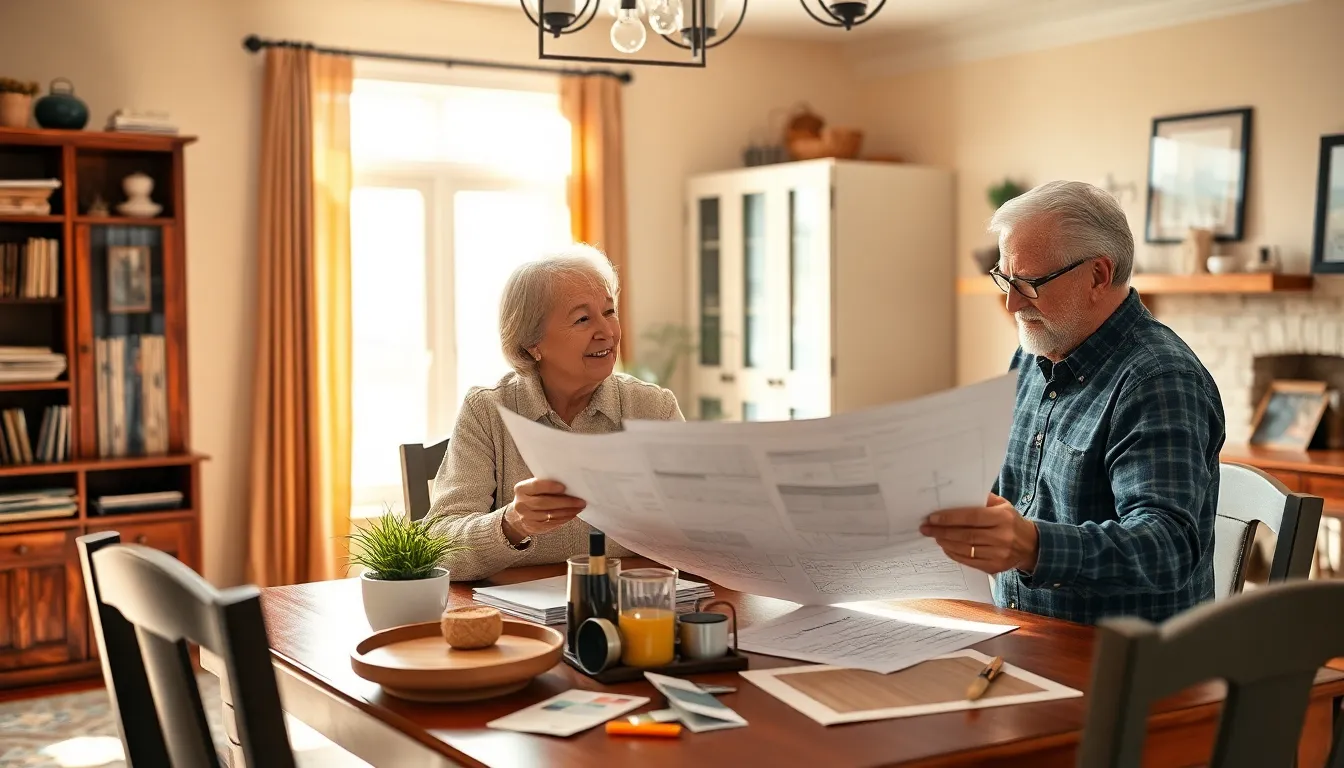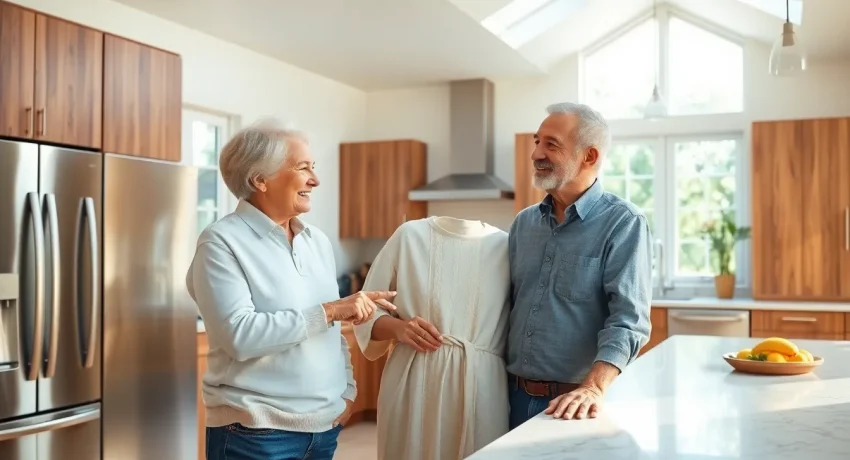Table of Contents
ToggleRetirement isn’t just about trading in the briefcase for a beach chair; it’s also the perfect time to transform a house into a haven. Imagine a space that caters to comfort, accessibility, and maybe even a little whimsy. After all, who says your golden years can’t include a slide from the second floor?
Benefits of Home Remodeling for Retirement
Home remodeling during retirement offers numerous advantages. Enhancing comfort and accessibility plays a vital role in improving quality of life in this stage.
Enhanced Comfort and Accessibility
Creating a comfortable living environment directly impacts daily routines. Aging in place becomes easier with features like wider doorways and no-step entries. Accessibility ramps can simplify movement for those with mobility challenges. Installing grab bars in bathrooms significantly enhances safety. Thoughtful design considers both practical needs and aesthetic preferences, blending style with functionality. Features like single-level living or open floor plans reduce the need for stairs, creating a more user-friendly space. Ensuring that homes meet changing needs increases overall satisfaction during retirement.
Increased Home Value
Remodeling can significantly boost property value, making it a wise investment. Upgrades such as kitchen renovations and bathroom improvements attract potential buyers. Features like energy-efficient appliances and modern finishes appeal to the current market. A well-maintained and updated home stands out in competitive neighborhoods. Enhancing curb appeal through landscaping or exterior paint adds to the overall attractiveness of a property. Investments during retirement not only enhance living conditions but also provide financial returns if homeowners choose to sell later. Prioritizing renovations that elevate both comfort and marketability yields long-term benefits.
Key Considerations for Remodeling

Retirement remodeling requires careful planning. Several factors contribute to creating an ideal living environment.
Budgeting for Retirement Projects
Setting a clear budget becomes essential. It’s vital to account for all costs, including materials, labor, and permits. Prioritize projects to focus on essential renovations first. Assess home value increases against the budget spent. Local contractors or home improvement stores often provide insights into realistic pricing. Homeowners should also explore financing options, including home equity loans or grants specifically designed for senior renovations. Planning for unexpected expenses is prudent, ensuring the budget remains flexible.
Choosing the Right Contractors
Selecting qualified contractors is crucial for successful remodeling. Begin by gathering recommendations from trusted sources. Checking online reviews and testimonials helps ensure reliability. Focus on contractors with experience in senior-friendly design features. Interview multiple candidates, discussing project timelines and costs in detail. Verify credentials and licenses to ensure compliance with local regulations. Establishing clear communication is vital throughout the project. Ensuring the contractor understands specific needs guarantees a satisfactory result.
Popular Remodeling Ideas for Retirees
Homeowners often seek renovations that enhance both comfort and functionality as they approach retirement. Popular remodeling ideas focus on accessibility, safety, and personalization.
Creating Open Living Spaces
Open living spaces facilitate movement and promote social interaction. Removing non-load bearing walls creates a seamless flow between the kitchen, dining area, and living room. Natural light fills these areas, fostering a bright and airy atmosphere. Homeowners frequently incorporate large windows or sliding glass doors to connect indoor and outdoor spaces. This transition invites relaxation, enabling retirees to enjoy their surroundings.
Additionally, multifunctional furniture optimizes space usage. For example, a dining table can double as a workspace, catering to varying needs. Prioritizing open layouts often leads to a more enjoyable living experience.
Adding Safety Features
Safety features elevate independence and confidence within the home. Installing grab bars in bathrooms significantly reduces the risk of falls. Non-slip flooring materials in kitchens and bathrooms provide additional security. Many homeowners opt for zero-threshold showers, making access easier.
Lighting plays a crucial role in safety; well-lit hallways and staircases prevent accidents. Homeowners regularly choose motion-sensor lights for added convenience. They also consider wider doorways, enabling wheelchair or walker access. Prioritizing these modifications ensures a safer and more accessible environment for retirees.
Sustainable Remodeling Practices
Sustainable remodeling practices enhance a home’s functionality while supporting environmental responsibility. Making thoughtful choices benefits both retirees and the planet.
Energy Efficiency Upgrades
Energy efficiency upgrades significantly lower utility costs. Retirees can replace old windows with double-pane varieties, ensuring better insulation. Installing energy-efficient appliances, like refrigerators and HVAC systems, reduces energy consumption drastically. Smart thermostats offer precise climate control, allowing homeowners to manage energy use effectively. Solar panels provide renewable energy, further decreasing dependency on traditional power sources. Each upgrade contributes to a comfortable, eco-friendly living environment, enhancing long-term savings and sustainability.
Eco-Friendly Materials
Eco-friendly materials promote healthier living spaces. Using reclaimed wood for flooring and cabinetry preserves natural resources while adding character. Bamboo and cork serve as sustainable flooring options, providing durability and style. Low-VOC paints help improve indoor air quality, making homes safer for occupants. Additionally, choosing recyclable materials for countertops and fixtures minimizes waste in landfills. These choices not only resonate with the commitment to sustainability but also reflect a personalized, stylish approach to home design.
Home remodeling for retirement offers a unique chance to create a space that truly embodies personal style and comfort. By prioritizing accessibility and safety features, retirees can enhance their quality of life while ensuring their homes remain functional for years to come. Thoughtful renovations not only cater to individual needs but also increase property value, making them a smart investment.
With careful planning and consideration of budget and contractor selection, homeowners can navigate the remodeling process effectively. Embracing sustainable practices further enriches the living environment, aligning comfort with environmental responsibility. Ultimately, these renovations pave the way for a fulfilling and enjoyable retirement experience.




